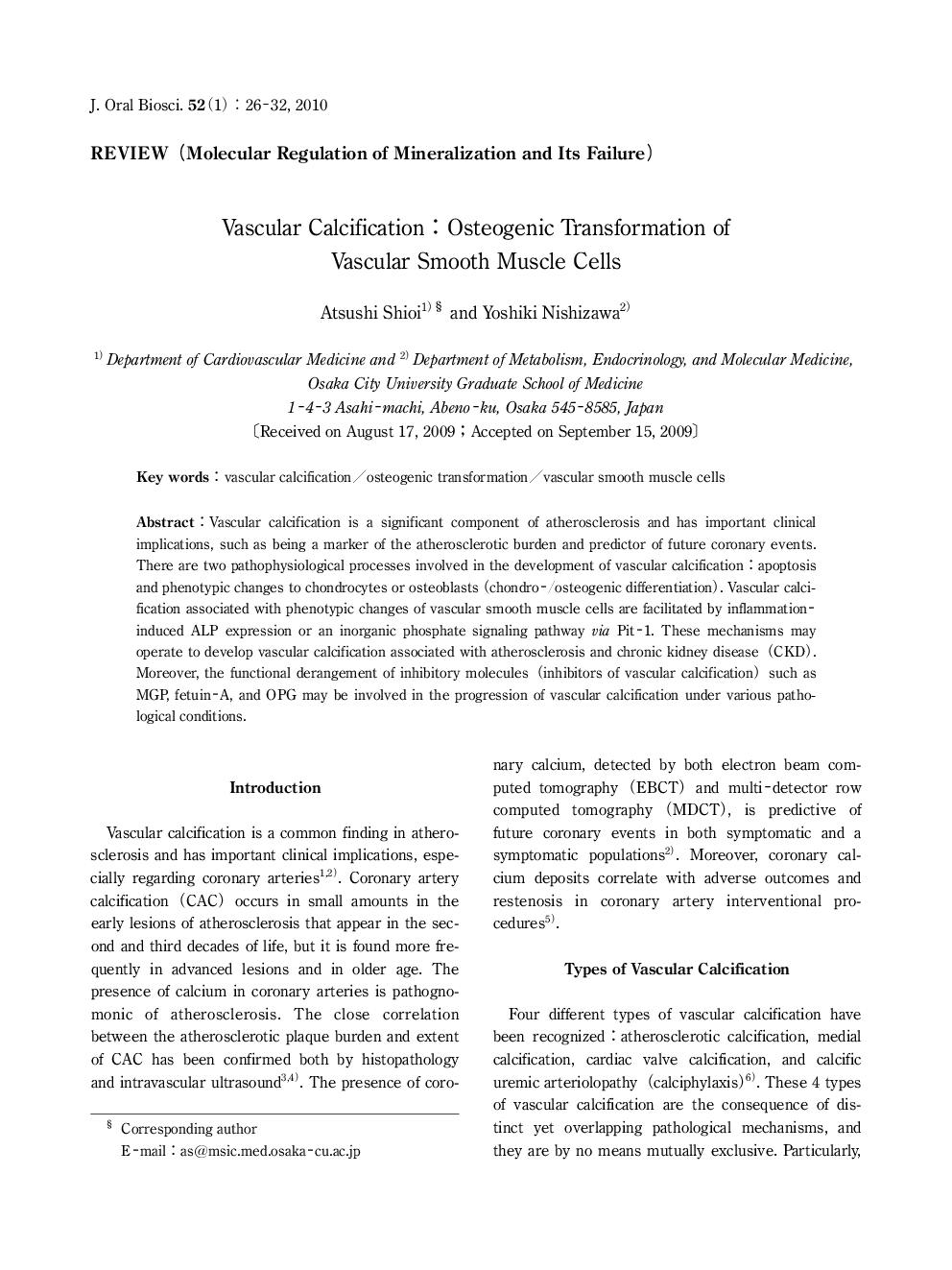| Article ID | Journal | Published Year | Pages | File Type |
|---|---|---|---|---|
| 2776942 | Journal of Oral Biosciences | 2010 | 7 Pages |
Vascular calcification is a significant component of atherosclerosis and has important clinical implications, such as being a marker of the atherosclerotic burden and predictor of future coronary events. There are two pathophysiological processes involved in the development of vascular calcification: apoptosis and phenotypic changes to chondrocytes or osteoblasts (chondro-/osteogenic differentiation). Vascular calcification associated with phenotypic changes of vascular smooth muscle cells are facilitated by inflammationinduced ALP expression or an inorganic phosphate signaling pathway via Pit-1. These mechanisms may operate to develop vascular calcification associated with atherosclerosis and chronic kidney disease (CKD). Moreover, the functional derangement of inhibitory molecules (inhibitors of vascular calcification) such as MGP, fetuin-A, and OPG may be involved in the progression of vascular calcification under various pathological conditions.
